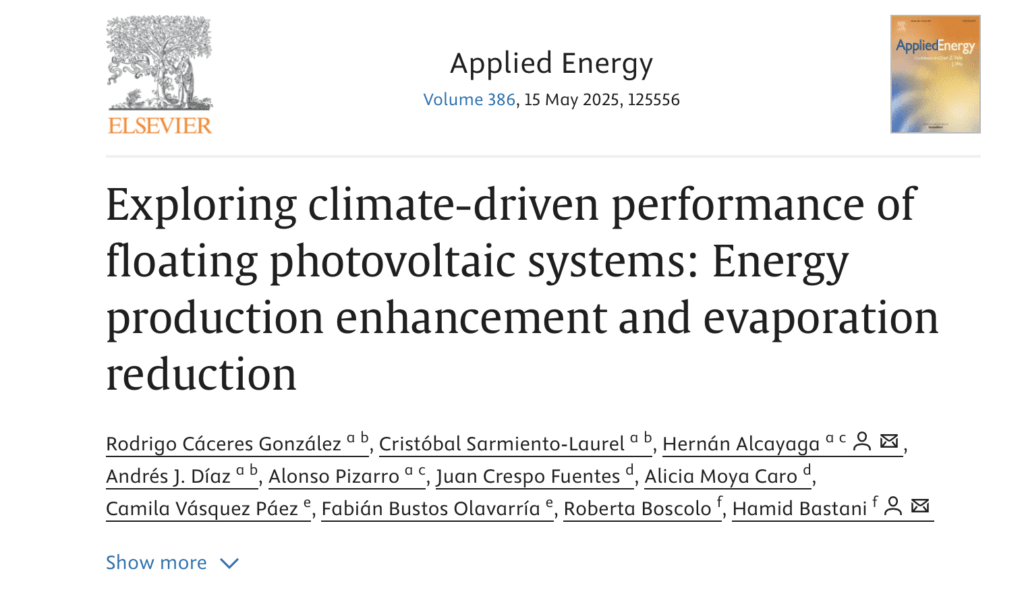
🔗 Read the full article in Applied Energy: Click Here
📄 DOI: Click here
The latest research, “Exploring Climate-Driven Performance of Floating Photovoltaic Systems: Energy Production Enhancement and Evaporation Reduction,” published in Applied Energy, examines how different climate conditions affect the performance of Floating Photovoltaic (FPV) systems across 4,244 water bodies. By analyzing four FPV configurations in semi-arid, desert, Marine West Coast, Mediterranean, and tundra climates, the study highlights the significant potential of FPV technology in enhancing solar energy production and reducing water loss. The findings reveal that cold desert climates with dry winters (BWk(w)) achieve the highest water savings, reducing evaporation by up to 2066.15 mm per year. FPV configurations with full water coverage, such as Type-A and Type-D, show strong water-energy synergies, with the Type-A system in semi-arid cold climates (BSk(w)) reaching a median energy production of 8187.65 Wh/m²/year and evaporation savings of 1085.24 mm/year. In tundra regions, where evaporation is generally lower, dry winters (ET(w)) and summers (ET(s)) enhance FPV performance, with ET(w) achieving a median energy production increase of 6430.7 Wh/m²/year and evaporation savings of 1165.20 mm/year. The study also emphasizes the role of module temperature reduction (∆T_mod) in optimizing FPV efficiency, with higher ∆T_mod values, such as 7.60°C in BSk(w), improving panel efficiency by up to 1.45%. By providing a comprehensive characterization of FPV performance across diverse climatic conditions, this research offers valuable insights into how FPV systems can be strategically deployed to maximize energy generation while conserving vital water resources.
